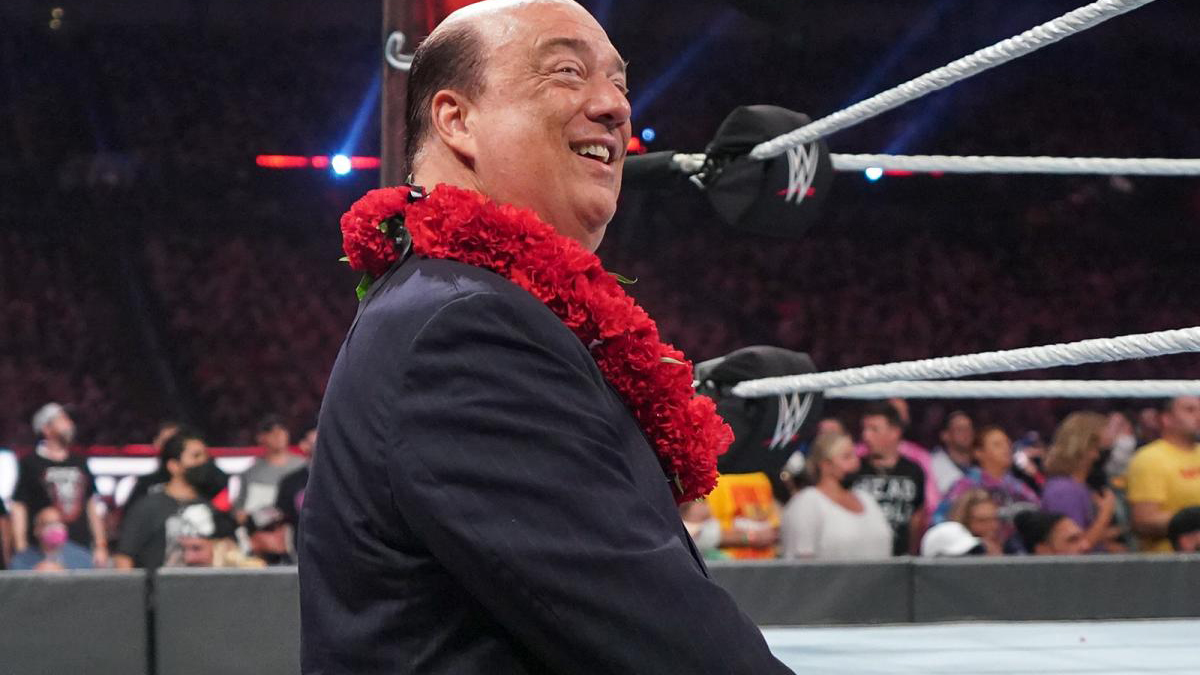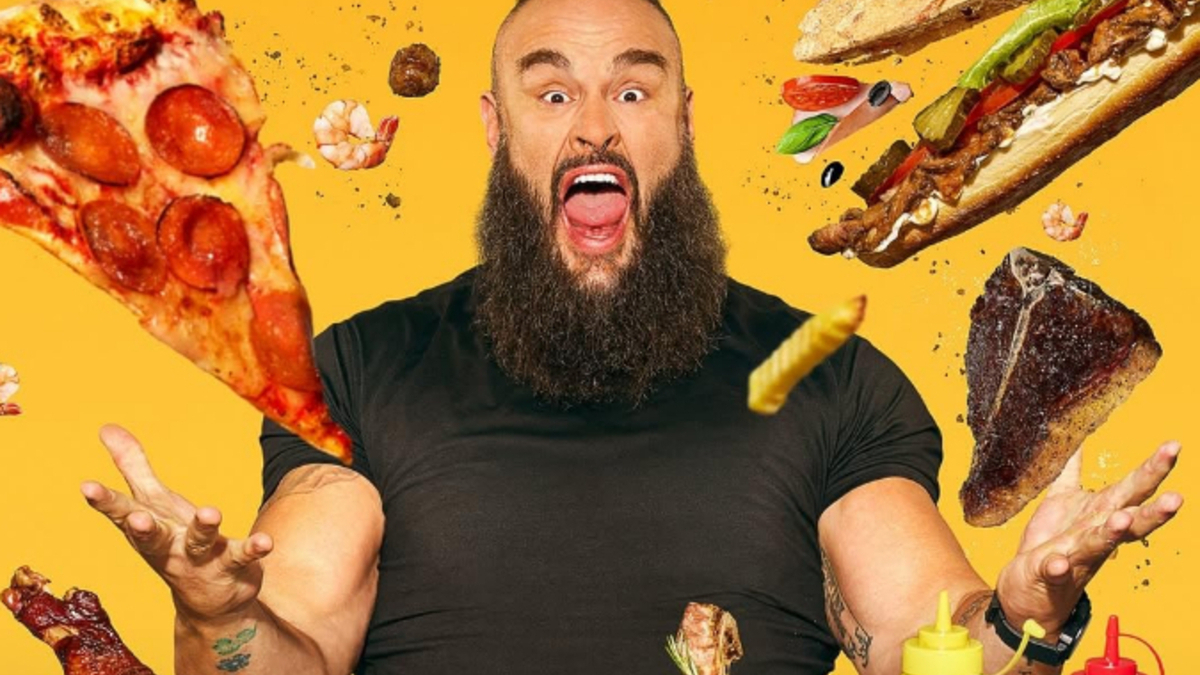Heyman A&E Biography showcases ‘Wrestling’s Last Wise Man’
There is such a thing as Biography fatigue. I just couldn’t do two in a row last night, when, for whatever reason, A&E chose to run a one-hour show about Ted DiBiase and then another on Paul Heyman, two people who have nothing in common.
As much as I dumped on the DiBiase one for its omissions (see A million reasons to be upset at the Ted DiBiase A&E Biography), the Heyman one was actually really good, and most of that is because of Paul E. himself.
When I worked at SPORTClassic Books, we published a book titled Branch Rickey’s Little Blue Book: Wit and Strategy from Baseball’s Last Wise Man, and it’s an apt comparison to Paul Heyman on a ton of levels.
Rickey changed the game of baseball in countless ways, including really establishing the idea of a developmental system in the minor leagues and, more famously, breaking the modern era color barrier by putting Jackie Robinson into the lineup of the Brooklyn Dodgers. And he was great with the press, quick with a bon mot and respected far and wide.
That’s Heyman in pro wrestling … and he might indeed be “Wrestling’s Last Wise Man” if only because modern society allows everyone to have an opinion on social media, creating their profiles and craving followers, and Heyman is the antithesis of that. He has always walked to his own beat, and there could have been a book made just of his lines from this Biography:
- “Presentation is everything.”
- “I don’t blink in life. I’m ready for anything.”
- “I was immature. I was a schmuck.”
- “I was a disruptor.”
- “If you achieve the dream, go after the next dream.”
- “Fatherhood was the great gamechanger.”
- “I’m an extraordinarily blessed man.”
Plus there’s that awesome photo of a young Heyman with the “Wise Men” of the WWWF managerial days: Captain Lou Albano, Classy Freddie Blassie and The Grand Wizard.
Heyman has also cultivated relationships, put value into them, and maintains them; it’s not cult-like, as has happened with his contemporary, Jim Cornette, but more about his ability to help someone get to the next level.
“Stone Cold” Steve Austin said something akin to that on the show. “There’s just something about Paul E., he can take anybody and turn them into a walking, talking promo machine. Paul has a way of dispensing advice like nobody else. He’s like a horse-whisperer, he’s the wrestler-whisperer,” Austin said at one point, and at another, he said, “He can make people see things that he sees in them that they don’t see in themselves.”
As for the show itself, there wasn’t a ton that I learned personally, as we had already done a pretty amazing piece with Heyman about his mother, a Holocaust survivor, back in 2009: Anti-Semitism in wrestling: Paul Heyman’s story. But for an average fan, there was lots of good stuff.
Richard Heyman was a personal injury attorney in the Bronx, and his son’s idol. In fact, that’s why the character of Heyman on WWE TV is an “advocate” and not a manager, since that was what his father did in the courtroom. A great supporter of his son’s dreams, Richard invested $4-million into ECW according to Paul.
His mother, Sulamita, was a Holocaust survivor. “That lives inside of me every single day,” said Heyman, saying that she had “trauma” every second of every day.
And she had high expectations. “I was bound to be the greatest disappointment of my mother’s life if I ended up being anything but the replacement for God. Anything short of that and my mother would feel like I didn’t live up to my potential or my responsibility as her son. My father, on the other hand, was going to encourage me no matter what I did in my life because that was just the nature of that man.”
Film was his “drug of choice” growing up and he loved seeing actors inhabit their characters. At age 10, he was “mesmerized” by Superstar Billy Graham at age 10. At age 15, he read about the WWWF honchos meeting at a steak house, and bluffed his way into getting a press pass to Madison Square Garden. Some vintage footage highlighted him at ringside.
“Paul would be in the back with us” at MSG,” recalled Sgt. Slaughter, detailing what made Heyman click. “He just became part of the woodwork, part of the family … he always spoke up and gave his opinion … Paul had a lot of questions, and that’s how you learn.”
Disinterested in college, Heyman ended up editing three wrestling magazines, and was the house photographer at Studio 54, then producer and promoter.
He wanted more in wrestling: “I wanted to write, direct and produce the shows. That was my dream.”
But first came the Paul E. Dangerously character (lifted from the Michael Keaton movie, Johnny Dangerously), managing on the indies, the AWA and then in WCW. If anything, this all got short shrift, but not surprising since it was a WWE Biography.
All through this time, his confidence grew, to the point he was meeting celebrities at the China Club in NYC, believing that they were fortunate to meet him.
Then comes the jump to ECW, but the transition from Eastern Championship Wrestling to Extreme Championship Wrestling was not covered (though there was a Biography on that: ECW A&E Biography same old, same old), nor did I hear owner Tod Gordon mentioned, though I saw him in a couple of photos.
When ECW folded, and Heyman went personally bankrupt, he was offered a deal he couldn’t refuse by Vince McMahon and jumped to WWF. Heyman’s time as a ringside announcer is basically ignored but the insight into him as lead writer on Smackdown was interesting and I wanted more of that.
Fighting with Vince McMahon, he left in 2006, but kept up his relationship with Brock Lesnar, doing The Beast’s social media and helping co-write Lesnar’s autobiography.
That was also when he started The Looking4Larry Agency, an advertising and marketing agency, and all the Heyman’s Hustle socials, which continue today. Mitchell Stuart, his partner in the agency, adds some talking head normalcy amongst all the wrestling personalities, which included Mick Foley, The Undertaker, Shawn Michaels, Corey Graves, Bubba Ray Dudley, Rob Van Dam, Kurt Angle, Michael Cole, Jey Uso, and Bill Watts and Lesnar from the archives. (Finally a Biography this season without Sam Roberts! Hallelujah!)
Five years later, Heyman returns to WWE and has been there ever since. All that should be pretty familiar to fans, and the actual names he managed through the years were never really listed. I mean, how to do you compare the Samoan Swat Team to managing Roman Reigns? Not to knock the SST, who were awesome, but Reigns and Lesnar were top dogs and Heyman was there alongside them.
For all the talk of how important family is to Heyman, neither of his kids were interviewed, just shown backstage.
But wrestling is a big family, and Jey Uso’s line stuck with me. First Jey noted how “tight” Heyman’s relationship is with Roman, but there was more going on. “He elevated the hell out of me too. He tried to help everybody. … If I don’t see you talking to Paul, then you’re missing out.”
That’s a statement I’ll agree with, and it applies to this Biography too.
RELATED LINKS
- Slam Wrestling’s WWE on A&E archive




